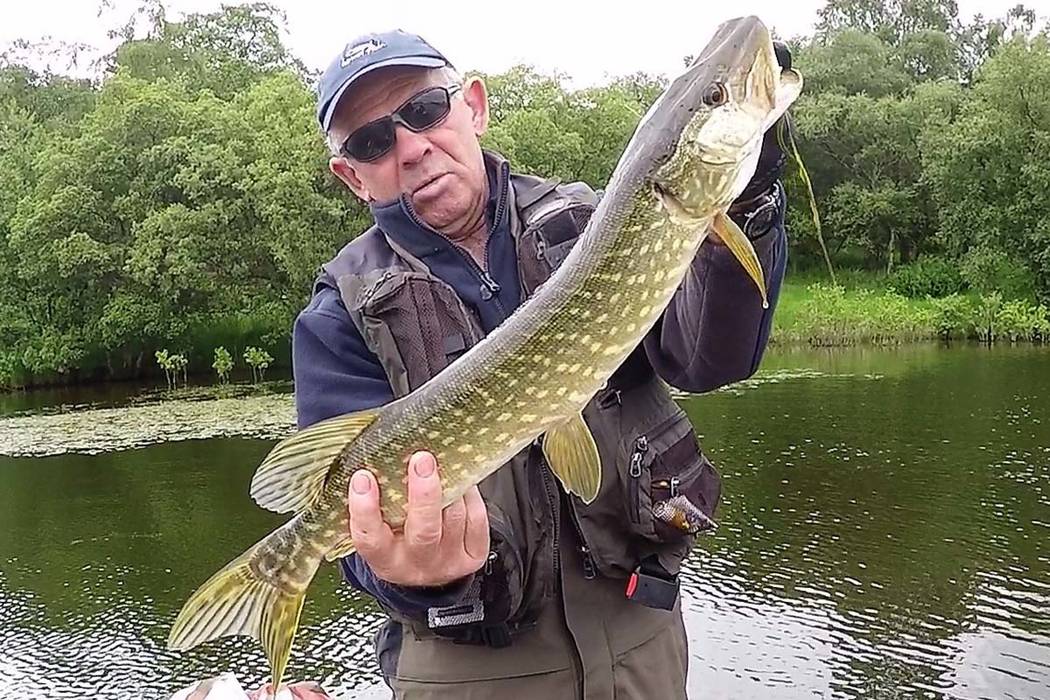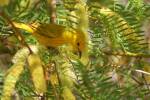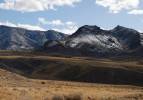Northern pike wreak havoc in Nevada fisheries
With its pink and white coloring, the large fly was easy to see where it rested just below the surface of the root beer-colored water. Something had bumped the fly seconds before, and now I waited and watched.
The seconds ticked slowly by as I focused on the fly. Then suddenly the long slender shadow of a large fish passed below the fly and disappeared in the dark. It reminded of something one might see in a movie about a rogue shark. Then the shadow reappeared as the fish swam in the other direction, but still the fly remained untouched.
“Leave it there,” my guide whispered.
I did as he said, but gave the fly a little twitch. Not much, just enough to create some movement. Out of the dark came a wide-open mouth full of needle-like teeth and the fly vanished. It was the business end of a northern pike and one of the coolest takes I have ever experienced.
If I could relive that take every day, it would never grow old. And if someone were to ask me why I fish, the retelling of that experience would have to be included in the answer.
Perhaps it is experiences like this that keep anglers coming back for more. And perhaps it’s the pursuit of experiences like this that have some fishermen illegally moving game fish from one water to another, and even from one state to another, without a thought of the possible legal outcomes or the ultimate impact to the resource, other anglers and even entire communities.
As much fun as my pike fishing experience was, I cannot and should not expect to find that opportunity in every waterway. No one should, because that it just not the way it works. Every fishery is different.
Since northern pike are a topline predator, they have an immediate impact on existing fish populations wherever self-appointed bucket biologists release them.
A pike problem
Female pike can lay as many as 100,000 eggs. Newly hatched pike feed first on their egg sack. When that is gone, they switch to zooplankton and then move on to insects. Within a couple of weeks, they graduate to eating other fish. Pike have the potential to grow quite large. Catching a 48-inch fish is always a possibility, but it takes protein – other fish — to get there.
This has professional fisheries biologists across the west more than a little concerned.
In Alaska, “Some lakes and streams that once supported healthy numbers of coho salmon, Chinook salmon, and rainbow trout now have only small northern pike. This is how illegally-stocked pike have lessened the quality of fishing and threaten wild and stocked fisheries…,” according to the state’s Department of Fish and Game website.
Colorado Parks and Wildlife is so concerned about the impact of illegally stocked pike that it is offering anglers $20 for each pike they pull from Green Mountain Reservoir north of Vail. To suppress pike numbers in one reservoir, the Washington Department of Fish and Wildlife offered $20,000 in cash and prizes to anglers who participated in a “PikePalooza” fishing derby.
Here in Nevada, the Department of Wildlife is offering a $10,000 reward for information leading to the prosecution of those responsible for illegally reintroducing pike into Comins Lake near Ely. Once known for growing large, hard-hitting rainbow and brown trout, the fishery was destroyed by illegally planted pike. Eventually even the pike population crashed.
In 2015, NDOW spent more than $250,000 to remove the remaining pike and restore the once renowned trout fishery. This summer the fishery began to show signs of regaining its former status, then word came that someone has once again taken it upon themselves to plant pike in Comins Lake. Though NDOW biologists are taking steps to find and remove the fish and protect the trout fishery, only time will tell whether those efforts have been successful.
Calendar Items
Opening day of the 2017 mourning dove season is Sept. 1.
Applications for hunting reservations the first two days of the waterfowl season at the Overton Wildlife Management Are and opening day at the Key Pittman WMA are due Sept. 13.
Freelance writer Doug Nielsen is a conservation educator for the Nevada Department of Wildlife. His “In the Outdoors” column, published Thursday, is not affiliated with or endorsed by the NDOW. Any opinions he states in his column are his own. Find him on Facebook at @dougwritesoutdoors. He can be reached at intheoutdoorslv@gmail.com




























